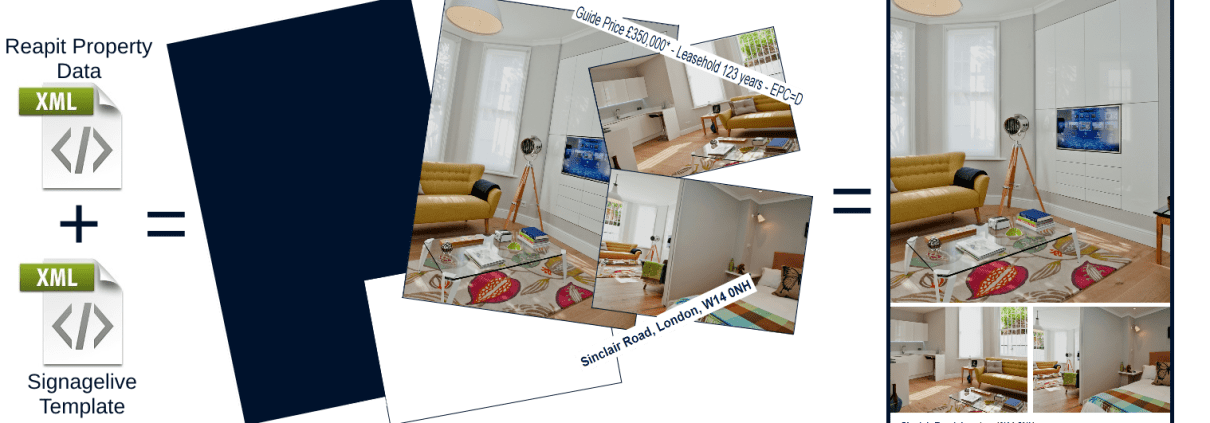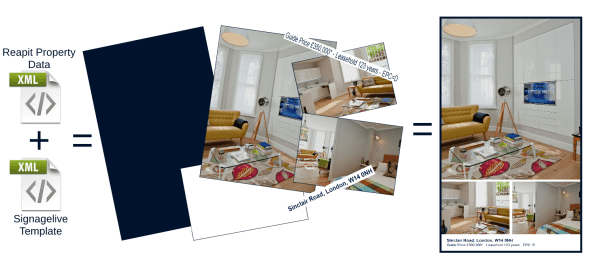Data Integration with Signagelive & Reapit
The last 2 week’s Development Blogs have been about what we will be releasing around the start of Q2/2015. This week we aim to give a more detailed look into one of our data integration projects, which you may have seen as a Case Study with Savills.
Data Integration with Reapit
Although this describes a specific instance of Data Integration it shows the possibilities within Signagelive. Working with Reapit we have developed a data integration engine which is triggered by the sending of a new XML file to us, which is set up by Reapit and their Customers.
All the estate agents need to do, is continue to work in Reapit, updating and adding New Properties as required, and then, at set frequencies, when Reapit send us a new XML file, the rendered images are updated and created as required.
We have then designed a templating language which describes how this data is used and converted into (at this point) static images. This templating language describes colour blocks, images to be used which are included in the XML Feed, including their location, what to do if the image isn’t available, and what should be done if none of the images are available, i.e. don’t include the property in the image production process.
We also use a scripting language (LUA) which allows us to change text and images which are displayed on other data within the Feed. For example don’t show a text block if a property is up for rent, or include additional text which describes the lease type and length.
We have also added transparency support so these images can sit over the top of other content within Signagelive.
Once a new XML Feed file is received from Reapit, the file is checked for any changes to existing properties or new properties which have been added, and the images for these are then produced to match the Template, and this is output as a Media RSS Feed which you can then add to your Signagelive Asset Library.
It is possible from one Reapit XML Feed to produce as many individual Feeds as you require. The Reapit feed is queried using XPath queries, which allow us to define which properties from the complete feed are included in each of the produced Feeds. Some examples of this filtering are:
- Only show properties which are for a specific branch
- Only show properties which are between a set price range
- Only show properties which are for a set of Branches
- Only show properties which are for a set Branch and a set price range
Each of these Feeds could use the same Template or different Templates.
So, although this integration is producing static images in a Media RSS format, it is just an example of what is possible, we could just as easily be producing dynamic web pages which are rendering the latest data.
And for this we are being sent a data file, but if you have existing data sources, with API’s which would allow us to retrieve data, or we could produce an API for those data sources to send us data directly.
If you are interested in this Data Integration or a Data Integration of your own, please get in touch.






